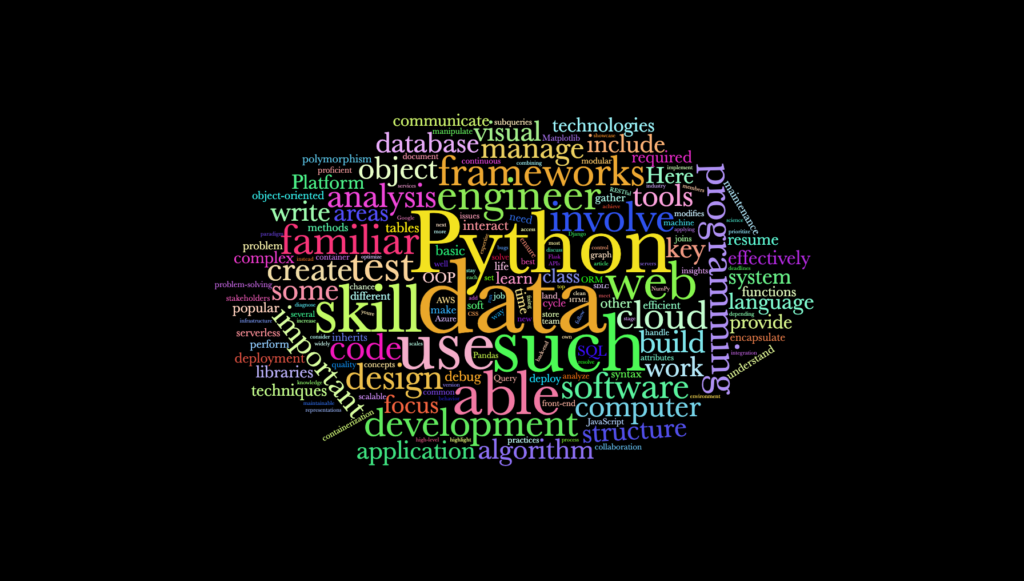
Python Like a Pro: Top 10 Expert Techniques for Data Science & AI
Python remains the top choice for data science and machine learning (ML) professionals. As technology advances, mastering advanced Python techniques is crucial to staying ahead in the field. In this article, we explore ten advanced Python techniques that will help data scientists and ML engineers enhance their skills in 2025.
1. Vectorization with NumPy
Vectorization speeds up numerical computations by eliminating slow Python loops. Using NumPy’s vectorized operations, you can perform calculations more efficiently:
import numpy as np
arr = np.array([1, 2, 3, 4])
squared = arr ** 2
print(squared) # Output: [1 4 9 16]This approach optimizes performance for large datasets, a must-have skill for any data scientist.
2. Efficient Data Manipulation with Pandas
Pandas remains a cornerstone for data handling, but using optimized operations like applymap and eval can improve efficiency:
import pandas as pd
df = pd.DataFrame({'A': [1, 2, 3], 'B': [4, 5, 6]})
df['C'] = df.eval('A + B') # Faster than df['A'] + df['B']
print(df)Leveraging eval reduces computational overhead when performing operations on large dataframes.
3. Parallel Processing with Multiprocessing
Python’s multiprocessing module allows parallel execution of tasks, significantly improving performance for CPU-bound operations:
from multiprocessing import Pool
def square(n):
return n * n
numbers = [1, 2, 3, 4, 5]
with Pool(4) as p:
result = p.map(square, numbers)
print(result) # Output: [1, 4, 9, 16, 25]This technique is essential for large-scale data processing tasks.
4. Memory Optimization with Generators
Generators reduce memory consumption by lazily loading data instead of storing it all in memory:
def number_generator(n):
for i in range(n):
yield i
for num in number_generator(5):
print(num)Using generators helps handle large datasets without exhausting system resources.
5. Advanced Feature Engineering with Scikit-learn
Scikit-learn provides powerful feature engineering tools like PolynomialFeatures and FunctionTransformer to improve model performance:
from sklearn.preprocessing import PolynomialFeatures
import numpy as np
X = np.array([[2, 3], [4, 5]])
poly = PolynomialFeatures(degree=2)
X_poly = poly.fit_transform(X)
print(X_poly)This technique enables better feature extraction for complex datasets.
6. Custom Transformers in Scikit-learn
Creating custom transformers allows for personalized data preprocessing workflows:
from sklearn.base import BaseEstimator, TransformerMixin
class SquareTransformer(BaseEstimator, TransformerMixin):
def fit(self, X, y=None):
return self
def transform(self, X):
return X ** 2Custom transformers integrate seamlessly into Scikit-learn Pipelines, ensuring efficient data preprocessing.
7. Accelerating Deep Learning with TensorFlow and PyTorch
Modern deep learning frameworks support GPU acceleration, significantly improving model training times:
import torch
tensor = torch.tensor([1, 2, 3, 4], device='cuda')
print(tensor) # Executes on GPU if availableLeveraging GPUs is crucial for handling large datasets and training complex models.
8. Hyperparameter Tuning with Optuna
Automated hyperparameter tuning improves model performance. Optuna simplifies this process:
import optuna
def objective(trial):
x = trial.suggest_float('x', -10, 10)
return (x - 2) ** 2
study = optuna.create_study(direction='minimize')
study.optimize(objective, n_trials=100)
print(study.best_params)Optuna finds the best hyperparameters efficiently, outperforming traditional grid search.
9. Explainable AI with SHAP
Understanding model predictions is critical. SHAP (SHapley Additive exPlanations) provides insights into feature importance:
import shap
import xgboost
import numpy as np
X, y = np.random.rand(100, 5), np.random.randint(0, 2, 100)
model = xgboost.XGBClassifier().fit(X, y)
explainer = shap.Explainer(model)
shap_values = explainer(X)
shap.summary_plot(shap_values, X)SHAP ensures transparency in machine learning models, a key requirement in modern AI applications.
10. Automated Machine Learning (AutoML) with H2O
H2O AutoML simplifies model selection and hyperparameter tuning:
import h2o
from h2o.automl import H2OAutoML
h2o.init()
df = h2o.import_file("data.csv")
aml = H2OAutoML(max_models=10, seed=42)
aml.train(y="target", training_frame=df)
print(aml.leaderboard)AutoML helps automate the tedious aspects of machine learning, boosting productivity.
Conclusion
Mastering these advanced Python techniques will help data scientists and ML engineers enhance efficiency, improve model performance, and stay competitive in 2025. By leveraging vectorization, parallel processing, deep learning acceleration, and AutoML, you can optimize workflows and achieve cutting-edge results in data science and machine learning.